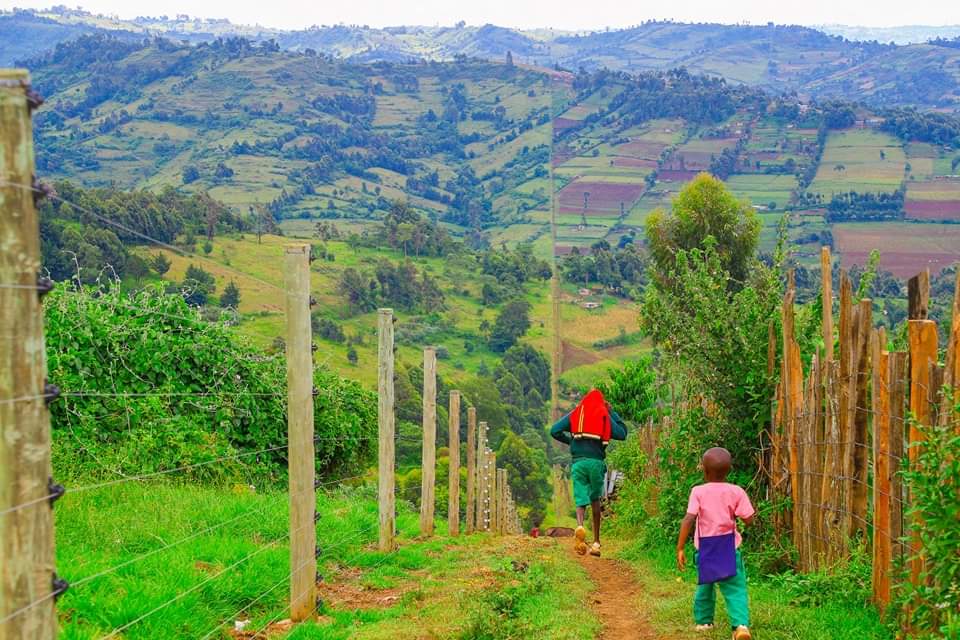Kenya Towers Authority completes first 30km smart fence to prevent human-wildlife conflict completed in Maasai Mau Forest
By MyGov Reporter
The Kenya Towers Agency has completed the construction of the Maasai Mau Electric Fence to reduce human-wildlife conflicts in Narok County.
According to the Kenya Water Towers Agency, the fence will be maintained to ensure that the Maasai Mau Water Tower is protected from encroachment, illegal logging and charcoal production.
The Board Chair of the Agency Mr. Rashid Echesa said the solar-powered fence seeks to also mitigate cases of human-wildlife conflict and allow natural regeneration to take place in the water tower.
Echesa, who launched the project, said engineers from the State Department of Public Works have assessed and issued certificates of no defects to the contractor, Top Choice Surveillance Limited, who has been on site for the last three years.
Echesa said the Kenya Water Towers Agency has employed 30 scouts from the local community to monitor and maintain the fence for an unspecified period.
The scouts, Echesa said, are augmenting the efforts of the Joint Enforcement Unit officers drawn from Kenya Forest Service, Kenya Wildlife Service, Rapid Deployment Unit and Narok County Government.
“We have established a good working relationship with the community and employed at least thirty youths as scouts of the project,” Echesa said.
He said the community cooperated well with the Agency and the contractor during the construction period.
“The community will continue accessing grass for their animals in the fenced section until the trees are fully grown. The grass will be cut and carried by the community and no livestock will be allowed inside the water tower," the CEO Prof Julius Tanui, said.
In 2020, Kenya received news from the United Kingdom Government that the Mau Forest Complex Water Tower had been admitted to the Queen’s Commonwealth Canopy (QCC).
The admission meant that the largest water tower in East Africa would be part of highly conserved forests like the Great Bear Forest in Canada, Arboretum of Ruhande in Rwanda, Kawari Forest Reserve in Nigeria, Liwonde National Park in Malawi, Mt Elgon in Uganda among others across the 53 Commonwealth countries.
By supporting the Mau Complex Water Tower under the Queen’s Commonwealth Canopy, Kenya hopes to accelerate the revival of the most extensive ecosystem and the most critical water tower covering approximately 455,000 hectares of land.
In 2018 and 2019, Kenya made great strides in reclaiming 3,500 hectares and 17,101 hectares respectively in Maasai Mau Water Tower that cumulatively covers an area of about 46,000 hectares.
Mau Forest Complex Water Tower is the most important Water Tower in Kenya and supports millions of livelihoods nationally, regionally as well as internationally.
It comprises 22 forest blocks stretching across six counties namely: Baringo, Bomet, Kericho, Nakuru, Narok and Uasin Gishu.
The Water Tower is a major catchment for 13 major rivers namely Amalo, Ewaso-Ng’iro, Makalia, Mara, Molo, Mumberes, Naishi, Nderit, Njoro, Nzoia, Nyando, Sondu and Yala. The rivers feed into five major lakes in Kenya and across the borders. These are: Lake Baringo, Lake Nakuru, Lake Natron, Lake Turkana and Lake Victoria.
The water tower is also the source of the River Nile that drains into the Mediterranean Sea through Uganda, South Sudan, Sudan and Egypt, making it a lifeline to millions of people in the region.

